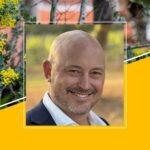Curtin academics have led the production of a world-first standards document to guide the supply and use of native seeds for the ecological restoration of degraded and destroyed forests and other natural landscapes.
Lead researcher Dr Simone Pedrini from the ARC Centre for Mine Site Restoration in Curtin’s School of Molecular and Life Sciences, said the growing demand for native seeds in ecological restoration and rehabilitation has resulted in a rapidly growing global industry in the sourcing, supply and sale of native seeds.
“Until now, there has been little international guidance for ensuring native seeds have the same standards of quality assurance that are regular practice in the crop and horticultural industries,” Dr Pedrini said.
“Ecological and forest landscape restoration initiatives around the world are increasing in number and scale and the demand for native seeds, which are the foundation of many such projects, continues to grow.
“However, the success of restoration projects continues to be constrained by seed‐related factors including limited availability, highly variable and often poor seed quality, inappropriate storage conditions, and low rates of seedling establishment in the field.”
Research team member and Director of the ARC Centre for Mine Site Restoration, John Curtin Distinguished Professor Kingsley Dixon said the standards document provided seed buyers, end users, and funding bodies with a level of confidence and reliability in the sourcing of quality native seeds, and a pathway toward global best practice in native seed use.
“The document provides users with practical tools to develop and structure seed supply systems, and aims to provide restoration practitioners with standard operating procedures for testing and reporting the quality of native seed batches,” Professor Dixon said.
“These standards are not intended to be mandatory, however, the guidance statements provide the foundation upon which regulatory approaches can be developed by constituencies and jurisdictions.”
Under the auspices of the International Society for Ecological Restoration based in Washington DC, the compilation of the first ever set of standards for native seeds drew upon an international drafting team of specialists, which included Dr Adam Cross, also from the ARC Centre for Mine Site Restoration at Curtin.
Dr Cross said the standards were already being adopted to great effect by groups around the world, such as Traditional Owners in the East Kimberley working with Indigenous trust Gelganyem Limited to provide quality native seeds for restoration activities at the Argyle Diamond Mine.
The standards document and supporting articles were published in a special issue of Restoration Ecology, available here.



